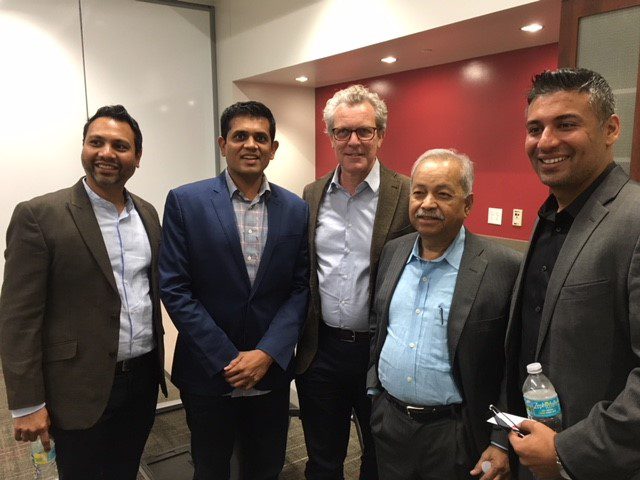Guest Speaker Explains India’s Election Year Political Climate

The 2019 Indian elections, which will be the largest exercise in democracy in world history, look increasingly competitive. While the incumbent, Prime Minister Narendra Modi, remains personally popular, his Bharatiya Janata Party is facing an unexpectedly robust challenge from the Congress Party and its coalition partners. Max Rodenbeck, South Asia bureau chief of The Economist, explained the long-term economic and social direction this election will take for New Dehli at a March 26 event in Orlando hosted by the India Center at UCF.
With more than 30 years of experience, Rodenbeck is considered one of the top political and economic analysts in the field. He formerly served as Middle East bureau chief, is a regular contributor for the New York Review of Books and author of Cairo: The City Victorious. His lecture covered a wide variety of factors that are influencing the election, as well as attributes of the ruling and top opposition parties. The results of the election, which is conducted in stages, will be revealed on May 23.
To understand the complexity of India and Indian politics, Rodenbeck began his talk with an analogy of the six blind men and an elephant. Each man touched a different part of the elephant and created their own vision, based on firsthand evidence, of what an elephant looks like. This famous analogy describes the many different facets of India. With 1.3 billion citizens, it is easy to form misconceptions about India, or only partially explain its complex cultural and political history. Rodenbeck emphasized that the Indian people are far from a monolith.
Rodenbeck noted that the election comes at a very crucial junction in history, with India’s role in world affairs evolving, a rapidly growing economy and an intense debate underway over the nature of Indian politics and society. As is usual in India, the upcoming election is supposed to have high turnout; full participation is encouraged and facilitated. Rodenbeck said it will be, “the largest and most expensive democratic election to ever take place.” He gave an example of how the Indian government goes to great lengths to allow its citizens to vote – such as the case of a woman who lives on a remote mountain. He said that the polling booth, which is independent of any internet connections to safeguard against tampering, was walked far up a mountain with the election commission and security officials just to gather one woman’s vote. In contrast to American elections, there are so many voters in the Indian election that it takes place in seven separate phases.
The upcoming election is considered a toss-up. The traditional Indian tendency to vote against the incumbent party suggests Rahul Gandhi and the opposition Congress Party may eke out a victory, though the business class in India continues to support Modi and the BJP. For Congress to win, it will rely on its network of alliances with regional parties. Rodenbeck stressed that the U.S.-Indian relationship may not be greatly affected by the outcome, as both parties favor stronger relations with Washington. Moreover, given the national priorities of each country, it seems inevitable that India is poised to be Washington’s most important strategic partnership in the coming decades.
